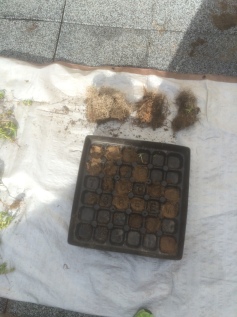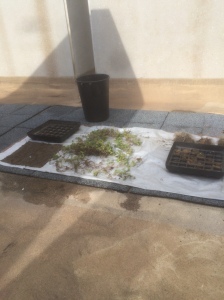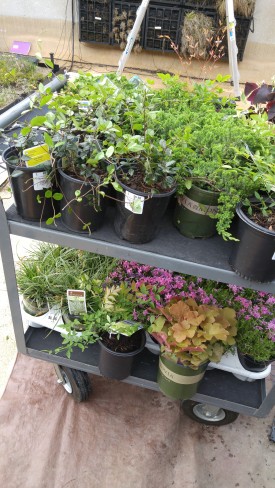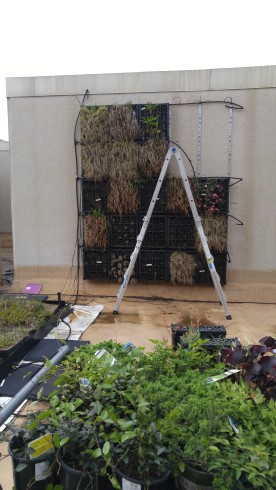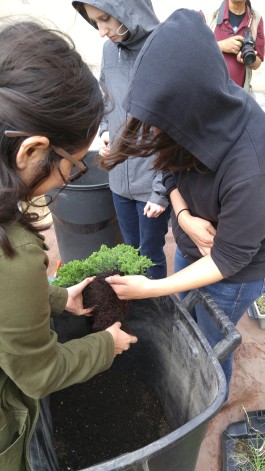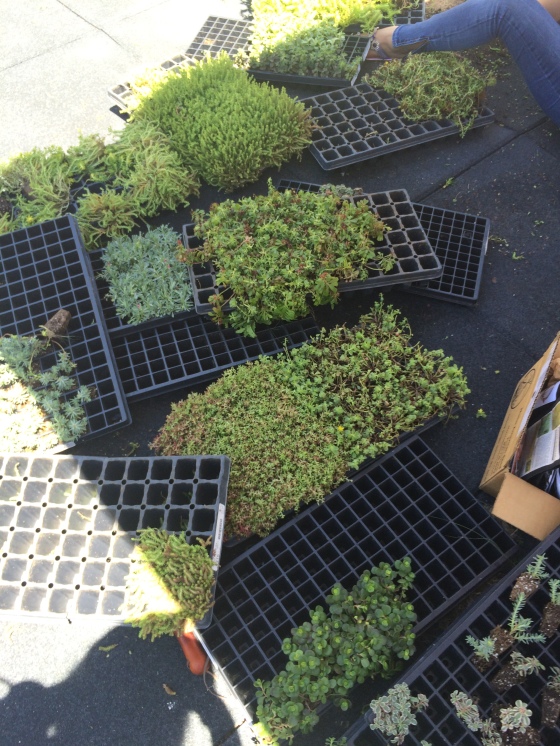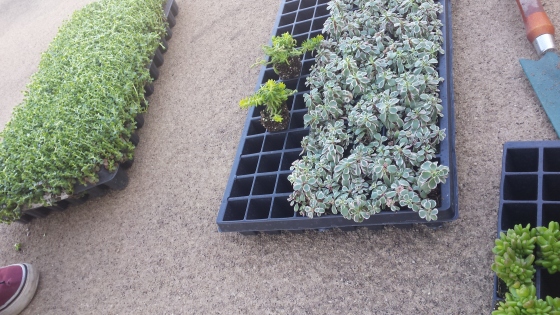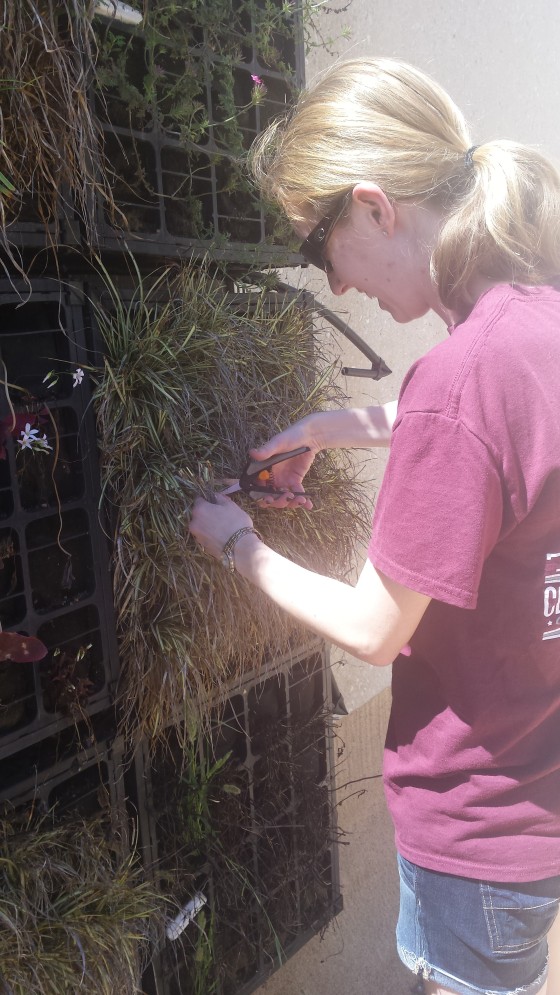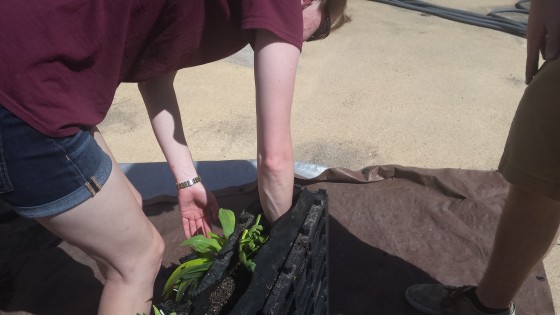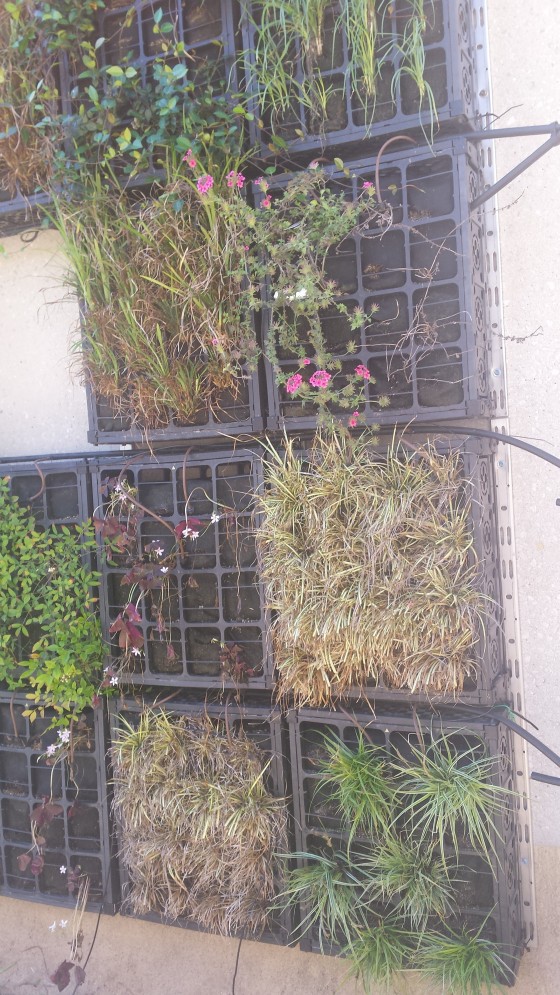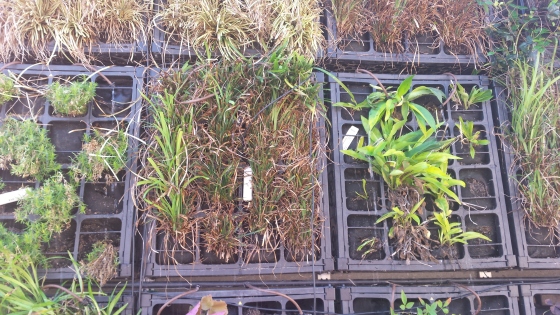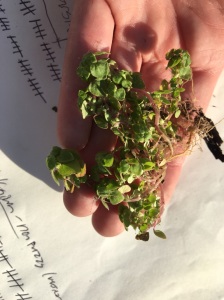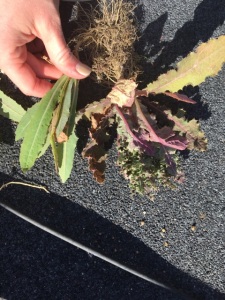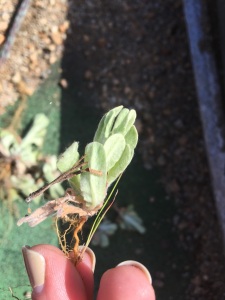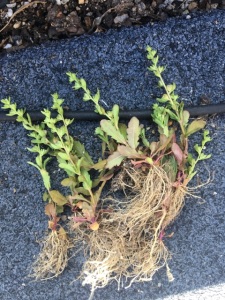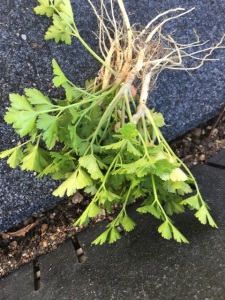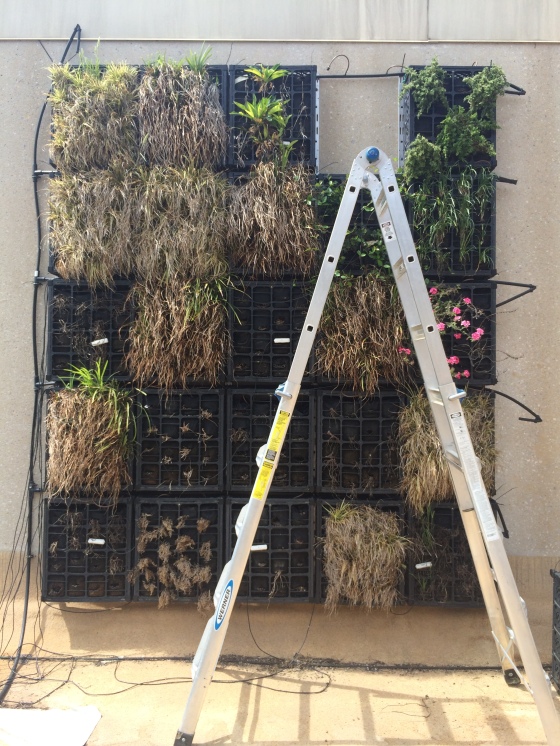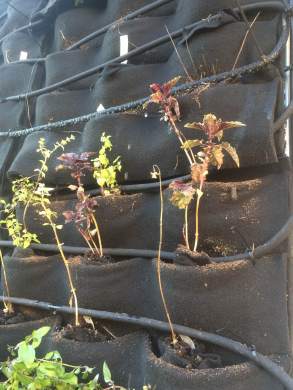
Coming back into the semester the first thing I worked on, other than weeding was on the living wall #2. living wall #2 is needed a new irrigation system, because the old system only distributed water to about 20% of the individual cloth pockets. Right before the end of last semester we installed a new irrigation system using soaker hoses to try to get water into every single pocket. Last semester we did not have enough time to put up the irrigation system well or get all the materials, so the irrigation was haphazardly thrown up.
This semester with more PVC pipe and glue for attaching the pipes to each other we could actually fully install the new irrigation system and make a few adjustments from the failures of the first attempt. We started by taking all the hoses off of the wall, then we built a pipe to bring the water up to the top of the wall. Last semester we connected the hose to the soaker hoses at the bottom of the wall, which required the water to snake up the wall through several hundred feet of hose. As you might expect this was not a good method, and the water was only able to get up about a third of the wall.
After we made the pipe to get the water to the top of the wall, we began to put the hose back on the wall. Last semester for speed we had one person zip tying the hose to the wall starting from the top coming down, and another person starting from the bottom, so we could connect up in the middle. As it turned out there was about 20 extra feet of hose left when the two sides got to the middle, and so we had to attach a second layer of hose onto the wall. This did turn out to make putting plants in that row just about impossible. This semester the we did not have to create punctures in the cloth of the wall, which made things easier, but we made sure to install the hoses from the top down so there would be no doubling back in the hose. We ended up using one less hose because the hose was tight tightly to the wall in the and never doubled back in the interest of space and water flow.
Finally, after building the pipe, and attaching the soaker hoses, we screwed on the attachment joints the to the top end of the soaker hose and hose coming from the irrigation system. Then we got to put in the final step by gluing the pipe to the attachments, linking the wall’s soaker hoses to the irrigation system. Now, we had made a system where the water would be carried up to the top in a pipe and snake downwards crisscrossing the wall with soaker hoses so that water was dropped directly into every pocket.
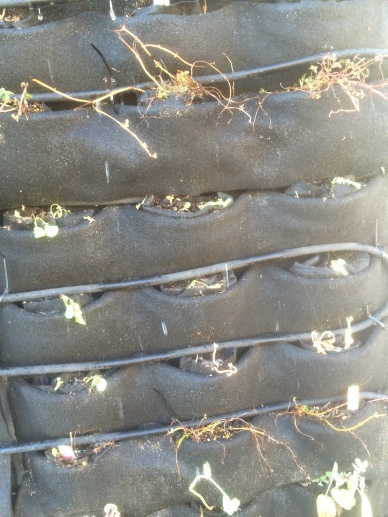
The water does not quite make it to the bottom, but the lower pockets do get some water from water dripping down from up above, which I tried to show in this picture.
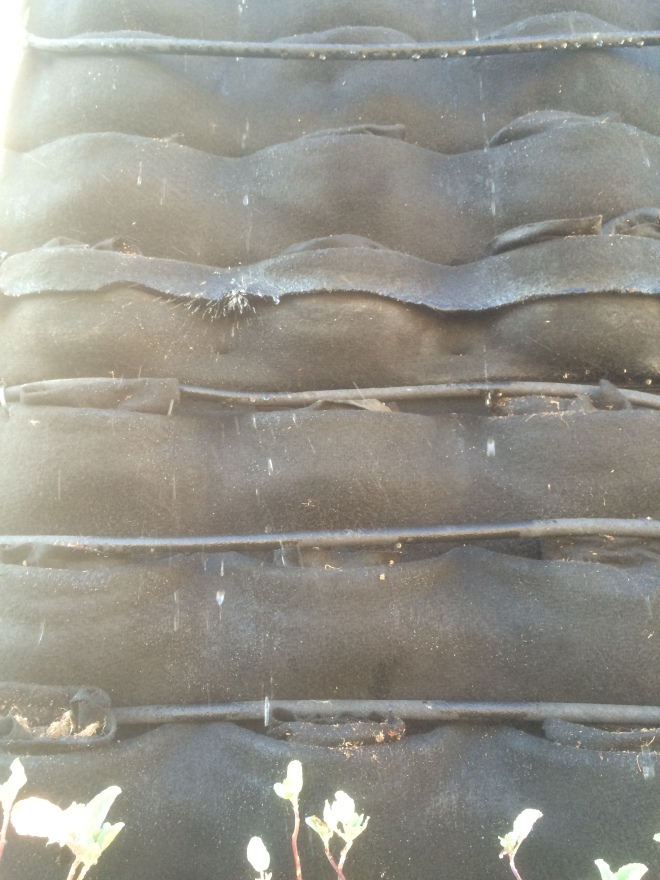
We planted onion seeds, peas, and baby radishes on the wall, but only the peas have grown beyond a sprout.
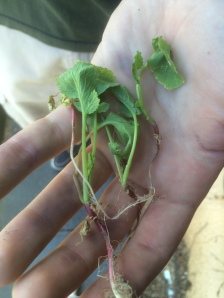
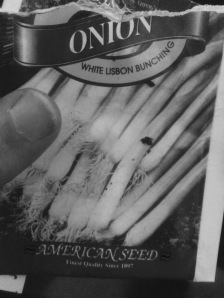
The irrigation system probably needs to have multiple points where water comes off of the main pipe on the side. There are also large swaths of fabric that shade the plants from sun and absorbs much of the water, so unfortunately despite installing a better system it was not good enough to grow plants on this green wall.
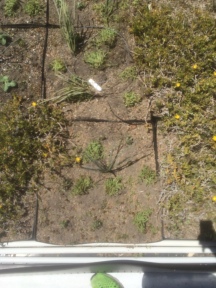
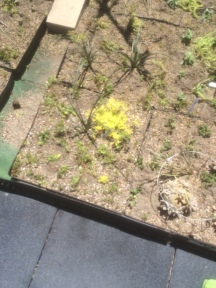
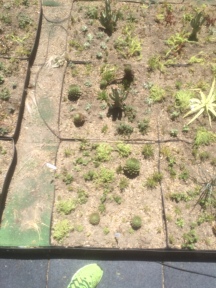
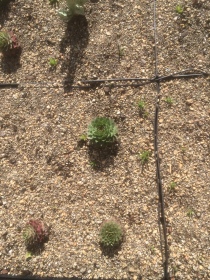 This way the smaller prairie plants would cover all the open ground that the weeds were growing in.
This way the smaller prairie plants would cover all the open ground that the weeds were growing in.